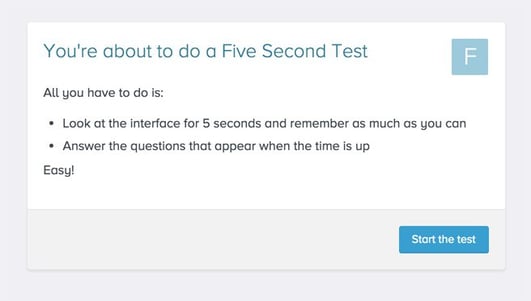It takes 5 seconds for a consumer to decide whether your website is the one they’re looking for or not. Does your website pass the 5 second rule?
Within 5 seconds most people have decided whether they like what they see or not. Do they like your website?
With more and more websites fighting for attention your website has to work hard to pitch your businesses, engage your visitors interest and persuade them to navigate into your website. It’s a fundamental function of any website yet many businesses overlook it assuming that the design they have is right.
Website design tips to keep visitors – try the 5 second test
Why is it important?
The obvious reason is that if a website fails to capture a users attention within the first 5 seconds they’ll leave to find another website that does. So it’s important because you’ve lost a potential customer. But having that customer leave without navigating into your site has a further knock on effect on your site’s bounce rate (the rate at which customers arrive, navigate no further then leave). This is important because there is increasing talk among SEO professionals that bounce rates will become ranking signals in forthcoming Google algorithm updates. So a high bounce rate could actually impact you’re website’s search positioning.
A quick fix to high bounce rates
The great news is that the 5 second rule is fast to apply, cost effective, great for measuring visual decisions before committing them to code and gives you peace of mind that the website you’ve built will appeal to the end user.
How to test your website
First you start with four key questions, these are designed to find out if a site visitor understands what your company does and what you offer.
Q1. Who is the company?
Q2. What do you do?
Q3. Who are the products or services aimed at?
Q4. How good does the company look/would you use the company?
Five seconds doesn't sound long, but if you actually count it (one elephant, two elephants, three elephants, four elephants…. you get the idea) you’ll realise that it’s actually quite a long time.
Now you know what information you’re after you need to determine which pages to test. Typically I'd suggest the homepage as this is the page that is most commonly seen, but it may be that you want to test a landing page, a category page or even a product page.
There are two ways of running the test, you can either print the web page out and show it to each member of your test group, asking them to look closely at it then take it away after 5 seconds. Or you could get your testers to view the page online. The problem with the latter option is that it’s difficult to remove the webpage after exactly 5 seconds have passed and users naturally want to click on links which skews results as they are taken off the page.
The best way to test
The best way I’ve found of testing site designs is to use usabilityhub.com. You can upload the image of your website homepage into a testing environment, compose your questions and voila you’re ready to go. It takes 10 minutes to create the test and 5 seconds to get the results.
Try a test yourself it’s fascinating to discover what your brain retains after just 5 seconds.

How many testers should I have?
As with any focus group or group of testers, the bigger the sample the more accurate your data. Try to build a group of testers that represent your audience, they will give you the most relevant feedback on your website.
Is the 5-second test reliable?
It may only be 5 seconds but it is amazingly reliable and incredibly cost effective. It takes all the guesswork out of determining whether or not a page is communicating effectively. In 2006 the Human-Orientated Lab at Carleton University, conducted three studies to ascertain how quickly people form an opinion about a website. Their conclusion was that within 50 milliseconds people will decide whether they like or dislike what they see and will form an opinion of it.
Final thought
Use the answers to your four questions to inform the styling of your homepage. Make small changes and re test. A five second test and 20 minutes to tweak your website design could be the difference between an enquiry and a bounce.
Related Posts
Subscribe to updates
Fill in your details below to recieve regular Quattro updates direct to your inbox.
